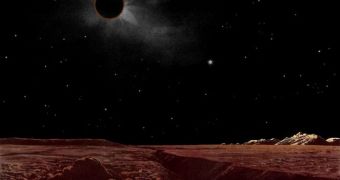Astronomers announce that an unusually long, total lunar eclipse will take place next week, on Wednesday, June 15. During the cosmic phenomenon, Earth's natural satellite will pass exactly through the center of the shadow our planet casts.
The event takes place just two weeks after another important astronomical milestone, the June 1 partial solar eclipse. The latter was only visible from Arctic regions, and appeared as if the Moon was blocking out a part of the solar disk.
Observations of the new lunar eclipse will be the clearest in the Eastern Hemisphere. For people living in North and South America, the event will not be visible, due to the fact that it will be daylight when the Moon will pass in Earth's shadow.
As such, the satellite will be located beyond the local horizon. Most of Europe will get to see the eclipse for a little while during the rise of the Moon, whereas most of Easter Asia (East China, Japan, Australia, New Zealand, etc.) will see the event when the Moon sets.
The regions in between, including central and southern Africa, the island of Madagascar, the Near and Middle East, the Indian subcontinent, and parts of Russia, China and Oceania will have the best vantage points for observing the eclipse.
As the eclipse takes place, the Moon will become between 10,000 and 100,000 times dimmer than it usually is. If observed from dark locations, it will appear three-dimensional and huge in the night sky.
The backdrop of the Milky Way – which is usually obscured by the brightness of the Moon – will also become more luminous, and amateur astronomers will be able to see it in more detail as well.
“The best place to see the event will be in central Asia. There, as well as in eastern Europe and northeastern Africa, observers will see the moon occult the cluster in a comparatively dark sky,” explains author Phillip S. Harrington.
According to astronomers, the totality of the eclipse will last for more than 100 minutes. This is remarkable, considering that the longest possible eclipse is 107 minutes. The halfway moment in the eclipse will be reached at 2013 GMT.
The next long-duration eclipse will take place 7 years from now, on July 27, 2018. That event will last more than 106 minutes. Another lunar eclipse, but shorter in duration, will take place on April 15, 2014, and will be visible from North America as well, Space reports.

 14 DAY TRIAL //
14 DAY TRIAL //